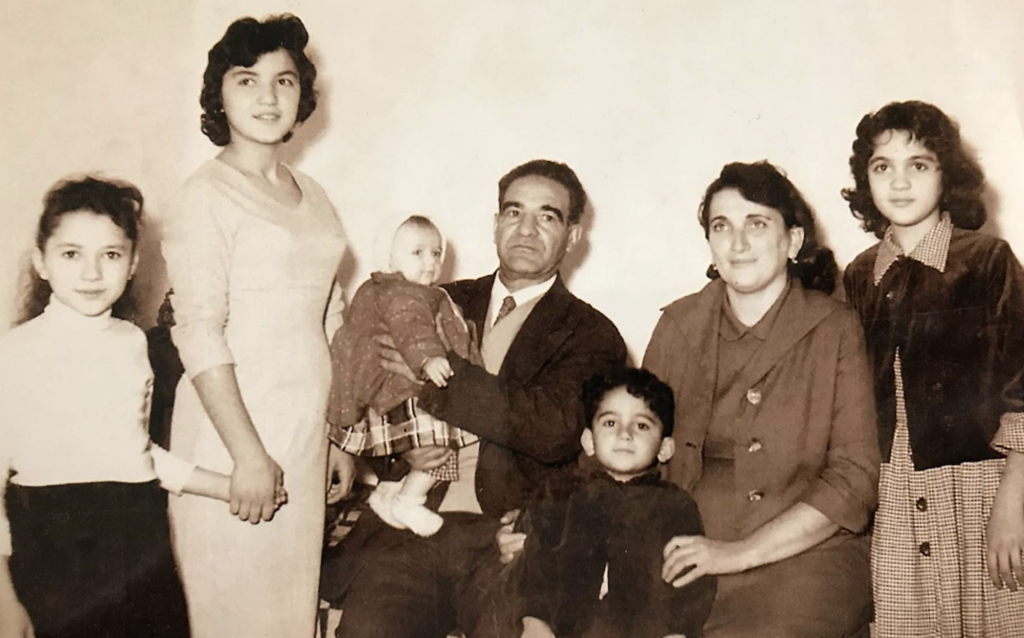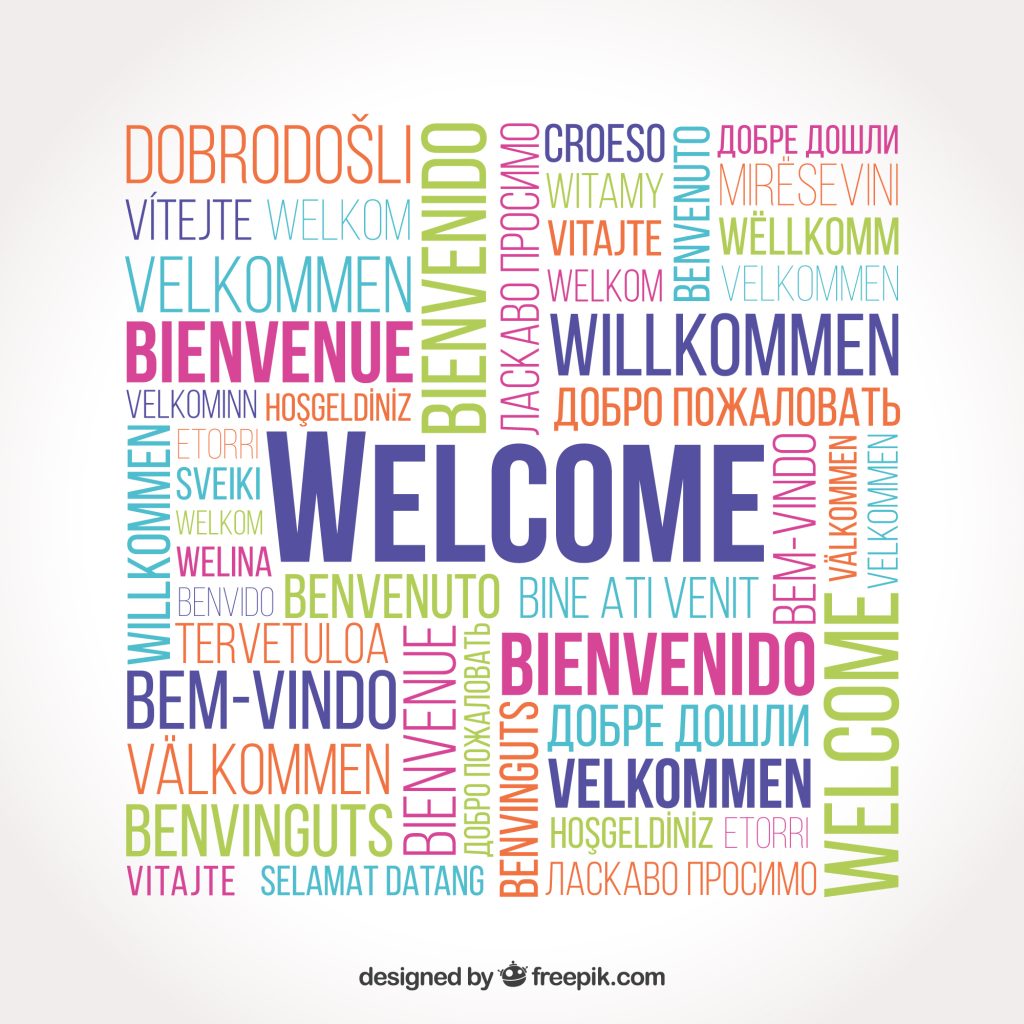Reflection Blog #1: Hyperlinked Communities- All Are Welcome
When I think of community, I am reminded of my maternal grandparents. They lived in a small town in the northern region of Iran. My grandfather was a dentist and a pillar of the community. Some of his patients were poor villagers from nearby rural areas who could only afford to pay with chickens or eggs from their farms. The thing I remember the most was that my grandparents sometimes hosted these patients for lunch with delicious meals that my grandmother painstakingly prepared. Despite the extra work, they were always welcomed and invited to share the meal with my grandparents and their family.

That was then, in what seems another lifetime, when life was simpler. However, the underlying sentiment of welcoming everyone is the notion of community that stuck with me as I read about hyperlinked library communities.

In her TED Talk, Ciara Eastelle states that libraries as heterotopias are inherently inclusive places. The concept of inclusion personally resonates with me. When I emigrated to the United States from Iran in 1979, I had to quickly learn a new language and adapt to a whole different way of living. Middle school and high school years were difficult because anti-Iran sentiment was at a high during the hostage crisis, and I experienced racism for the first time in my life. I went from being a member of the dominant culture in Iran to feeling marginalized in my new home. To cope, I began to go to the local library to find and devour books on the immigrant experience. I found it comforting to read about others undergoing similar struggles.
How do we make sure to reach marginalized groups in our communities, in our effort to reach all users? Librarians already do this in several different ways–– through diverse collections, efforts to bridge the digital divide, and various services and programming choices to benefit their communities. Diverse reading collections can provide reading materials that act as both a mirror “allowing readers to see themselves reflected in characters who might be experiencing situations or challenges similar to their own” (as I did as a young adult) and as a lens “opening readers up to different insights, cultures, and experiences they may not otherwise experience, deepening their empathy for others” (Klinker, 2020). In response to the 2020 pandemic, libraries partnered with community networks to find creative ways of providing internet access to those who needed it most. Programming like the Human Library Project (discussed in more detail in a previous post) “builds a positive framework for conversations that can challenge stereotypes and prejudices through dialogue” (Lauersen, 2018).
However, libraries also face major obstacles to inclusion: fear of change, biases, and the lack of diversity in LIS education and workforce (Lauersen, 2018). I would argue that the first two obstacles are interrelated as biases are often reflections of our fear of the “different other.” Despite our best intentions, everybody has their implicit biases. Lauersen (2019) defines biases as “the stories we make up about people before we know who they really are”, reminding me of this TED Talk by the brilliant Chimamanda Ngozi (who also happens to be one of my favorite authors). These false stories are “mental walls and fences” that are much more difficult to break down than physical walls.
It’s easy to think that we may be immune to implicit biases, but humans categorize things unconsciously all the time (Hacking Your Mind-Living on Autopilot, PBS, 2020). This means we are all susceptible to categorizing people as in-groups vs. outgroups and therefore prone to bias and prejudice. I was also surprised when I took Harvard’s Implicit Bias test, thinking that my results would be more in line with how I thought of myself. The “autopilot” part of the brain that does the rapid categorization is not necessarily the best way to judge people, as it evolved as a survival mechanism for our ancestors.
How do librarians bypass this autopilot and mindfully create inclusion? John Spears, the Chief Librarian at Pikes Peak Library District, describes being a librarian as all about building trust, relationships, and bridges with and amongst people from various backgrounds (Buenting, 2023). He exhorts us to remember that every person has their own background that shapes their worldview––whether they are experiencing homelessness or have a different racial or sexual identity or orientation (Buenting, 2023). The key is to not judge others by your own culture and to keep in mind the intersectionality of cultural and socioeconomic factors when helping patrons (Buenting, 2023). As librarians interacting with patrons from diverse backgrounds, we will not necessarily know all the cultures we come across or the relative salience of multiple identities of an individual, known as intersectionality. However, although helpful, this knowledge is not necessary. By adopting a “culturally humble” mindset that recognizes that cultural elements and power dynamics both play a role in interactions without making any assumptions about how they will materialize, we can more effectively interact with others from diverse backgrounds (Hurley, 2019).
“We are creating inclusion by casting light on blind spots, advocating, opening people’s eyes, giving them tools to work with hidden biases, trying to understand the structures we are living in, put things into action and really start to dance with people who don’t look like ourself” (Lauersen, 2018).
This is what Lauersen (2018) refers to as “dancing” with people who are different. True inclusion means that we recognize and address our own implicit biases. It means trying to understand how existing structures amplify the voices of those in power, while marginalized voices struggle to be heard. Our job as future librarians is to listen to and amplify these marginalized voices who have been left out of the conversation. This begins with creating a more diverse workforce to have varied viewpoints represented within our field, so that the library workforce is not in danger of being a “single story.” But it doesn’t end there; we need to continue to include diverse voices in our collections, in our services, and our library. In our interactions with patrons, we must remain “culturally humble” and strive to extend “gestures of inclusion and caring” that recognize and validate experiences and emotional reactions” (Harvard DIB&E Toolkit, p. 12). As my grandparents did so many years ago, we must welcome our community in and treat them as treasured guests.
References:
Buenting, D. (2023). Interview with Leaders of Pike Peak Library District . Smartplayer. http://smartplayer.captionsync.com/play.php?vid=1579376987ddavid_68e5744631bc&embed =true&&show_transcript=t&start=0&end=1862&showcc=f&show_transcript=t
Diversity, Inclusion, Belonging & Equity Toolkit. (n.d.). Harvard Human Resources Center for Workplace Development https://edib.harvard.edu/diversity-inclusion-belonging-equity-toolkit
Eastelle, C. (2019). How libraries change lives . Ted Conferences. https://www.youtube.com/watch?v=Tvt-lHZBUwU&t=4s
Hacking Your Mind: Living on Autopilot (Episode 101) (2020, September 9). PBS.org. https://www.pbs.org/video/living-on-auto-pilot-5p5jct/
Hurley, D. A., Kostelecky, S. R., & Townsend, L. (2019). Cultural humility in libraries. Reference Services Review, 47(4), 544–555. https://doi.org/10.1108/RSR-06-2019-0042
Klinker, J. (2020, July 24). The healing power of books: Using reading to address social and emotional Needs. Gale Blog: Library & Educator News. https://blog.gale.com/the-healing-power-of-books/
Lauersen, C. (2018, June 7). Do you want to dance? Inclusion and belonging in libraries and beyond [conference session]. The UX in Library Conferences. Sheffield, United Kingdom. https://christianlauersen.net/2018/06/07/inclusion-and-belonging-in-libraries-and-beyond/
Ngozi, C. (2009). The danger of a single story. Ted Conferences. https://www.ted.com/talks/chimamanda_ngozi_adichie_the_danger_of_a_single_story?language=en
7 Comments
Emily Mizokami
Roya,
Beautiful piece. Thank you for going to so much effort to share your story and to remind us to appreciate and highlight everyone’s story and to try and grapple with our own bias.
Roya Koutchekinia
@emmizo Thank you Emily!
Rodrigo
Hi Roya,
Thanks for taking the time to share your experience. Also, I got interested In the TEDx video by Chimamanda Ngoz and the “mental walls and fences.”
Roya Koutchekinia
Hi Rodrigo,
Thank you @deltoro87 for taking the time read my post. I adore Ngozi, and find that particular talk by incredibly compelling.
Michael Stephens
@royaflin So much good here. The photo of your grandparents and children was absolutely lovely. And I so appreciate all the encouraging and inclusive quotes you pulled out of the modules resources to craft your ideas about belonging.
Roya Koutchekinia
@michael. Thank you so much for taking the time to read this post and for your kind comments.
I had somehow missed the 250-300 word limit for the reflection blogs. I am wondering if I should be condensing this blog to turn in at the end of the semester.
Michael Stephens
@royaflin There is no ;limit on word copunt…just a minimum 250-300 words. You are just fine. Students usually7 write more when inspired.